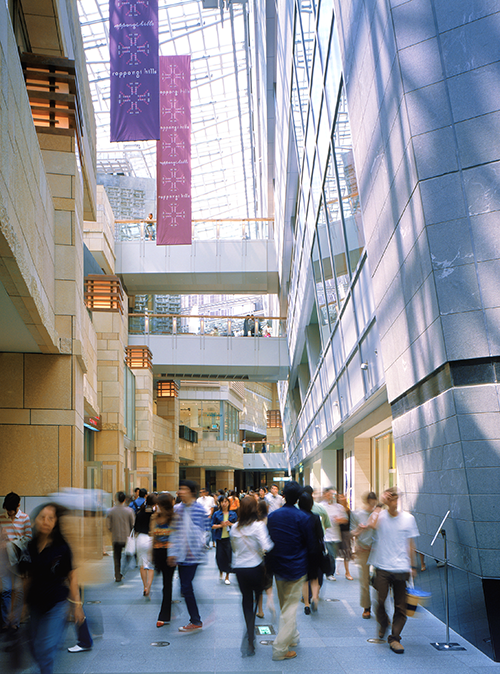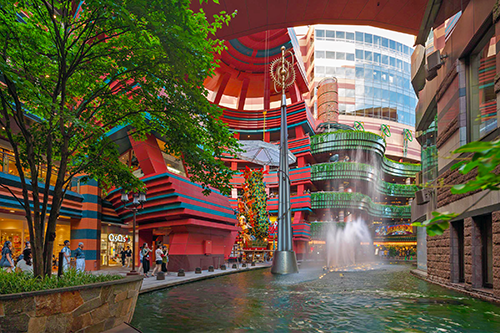Architectural Psychology: What Is It?
Few things in life affect how you feel more than your surroundings, so when people are looking to create spaces and come to us architects, it is vitally important for us to take human psychology into consideration at every step.
Without a thorough understanding of human behavior, architectural design may not achieve its intended use. So we need to ask ourselves, how do factors such natural light, safety, or even technology affect design? What part does emotion play in design? And how does the human desire for protecting our planet affect design choices?
The Role of Psychology in Architecture
A key notion proven by centuries of evidence is that our human behavior adapts to environments and factors at that specific point in time, better known as architectural psychology. Knowing that our ancestors built pyramids, palaces, and lived in extreme weather conditions without the technologies available today, it's evident that the built environment is constantly modified based on human needs (food, climatic comfort, shelter, space) and an individual person's needs (factors that affect the role individuals play in society) for the population at the time. Human reaction to their built environment can be influenced by tweaking and balancing certain factors to impact movement and interaction in a space.
At JERDE architecture firm, we believe in the curation of placemaking experiences. This means we take into account numerous environmental factors, personal emotions, and/or moods for the intended use of a space. Here are some of the key factors we play with when designing projects around the world:
Engaging with Natural and Artificial light
Two properties of light create quality and mood, and can completely change the way we see an object due to comfort; these are Color Temperature and Chromatic Rendering Index (CRI), which are applicable to both natural and artificial light. Throughout the day, light has different color temperatures, which change the color saturation of a building, and may appear more vivid or more vanished depending on the time of day. This also depends on where we are. Architecturally speaking, natural light is integral to the design of a building and can be used in different ways, including zenith light and diffused light.
Artificial light that will be installed to compliment a project will need to be carefully chosen to match the intensity needed to create the right environment. With the color temperature from warm to cold, we can change the color saturation, to create an impact on the spatial environment that may cause feelings of greater or lesser proximity, or more or less pleasantness in the space. This property of light can also be seen in sunlight.

Playing with Color
Reactions to color are solely physical in nature. Instead of the obvious optical reactions, it is in fact a reaction to the energy of the light waves. The common assumption is that color is no more than decoration and can simply follow trends, but this is absolutely false and counterproductive. Light is an integral element of the architectural environment as it affects the way the brain processes and judges what it perceives on both an objective and subjective basis. For example, red has an effect of exciting or stimulating but can also be alerting or aggressive, while green is more relaxing to the eye and causes the exact opposite reaction of red. As architects, we must even consider the color effect of every element of a building's construction, from the earthy colors of primary construction materials like wood, stone, brick, and marble, to the expansive variety of colors available for paint, doors, windows, siding, and trim.

Using the Latest Technology
From start to finish, technology affects the way we design and the experience of the design process. JERDE has been working to integrate optimization tools into the front-end of the design process to produce more performative and environmentally sensitive architecture. HVAC, facial recognition, and BIM are all technologies that boost safety, speed and efficiency within the built space. With technology being part of our everyday lives, new innovations can act as comfort for visitors and clients when used within the design of a space. The by-product, unfortunately, is that these elements may also damage the environment and our planet.
In the last few years, the common response to the unequivocal impact of the built environment on climate change is to introduce technological fixes as a means to reduce energy consumption, either through insulation or high-efficiency heating and cooling systems, which can be seen in some of the latest JERDE projects.
Building of Green Spaces
The psychological impact of architectural design cannot be ignored. You will see that numerous JERDE designs promote a strong connection to nature, with bountiful plant life and green space. These spaces can sometimes act as the central focal point from all areas of the project, welcoming visitors and residents to meander and enjoy the outdoors.
Estrangement from nature can directly impact our health and ability to respond to crucial modern challenges, such as climate change, because these dire environmental topics feel too far removed from our sense of familiarity. JERDE has seen new developers increasingly want architects to design places grounded in their own unique environment. We have exciting projects in the pipeline and set to open in the next few years, that will reflect this desire to be closer to nature.
The magnitude of balancing the key factors discussed above is so significant that they are beyond master planning, structure or even governments. Finding a sweet spot is incredibly difficult and can make the process extremely philosophical and sound much like the Chinese Yin/Yang philosophy. As points of reference for projects that have successfully achieved this balance and reflect the notion of how psychology can serve as a guide throughout the architectural design process, a few wonderful examples come to mind, including Namba Parks, Roppongi Hills, Powerlong Xiamen International Center, Universal CityWalk, and the Atlanta Braves Mixed-Use Development.





